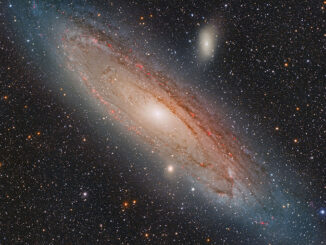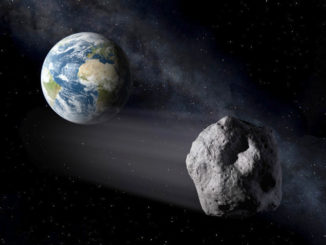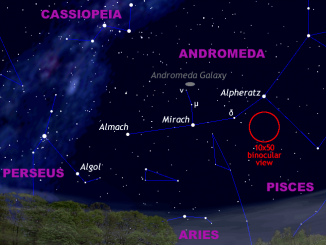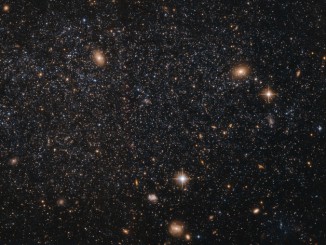
Andromeda Galaxy






Ten-metre Canary Island telescope obtains deepest Earth-based galaxy image
The Instituto de Astrofísica de Canarias (IAC) set out to test the limit of observation which can be reached using the largest optical-infrared telescope in the world: the Gran Telescopio CANARIAS (GTC). The observers managed to obtain an image 10 times deeper than any other obtained from the ground, observing a faint halo of stars around the galaxy UGC0180.

A mysterious solitary galaxy in Ursa Major
The drizzle of stars scattered across this image forms an irregular dwarf galaxy known as UGC 4879. Some 2.3 million light-years from its closest neighbour, UGC 4879’s isolation means that it has not interacted with any surrounding galaxies, making it an ideal laboratory for astronomers looking to understand the complex mysteries of starbirth throughout the universe.

Hubble sees distant spirals through a diffuse dwarf galaxy
At first glance this NASA/ESA Hubble Space Telescope image seems to show an array of different cosmic objects, but the speckling of stars shown here actually forms a single body — a nearby dwarf galaxy known as Leo A. Its few million stars are so sparsely distributed that some distant background galaxies are visible through it.

Hubble captures a low surface brightness galaxy
This striking NASA/ESA Hubble Space Telescope image depicts the low surface brightness (LSB) galaxy known as UGC 477, located just over 110 million light-years away in the constellation of Pisces. LSB galaxies appear to be dominated by dark matter, making them excellent objects to study to further our understanding of this elusive substance.

Andromeda Galaxy’s first spinning neutron star found
Decades of searching in the Andromeda Galaxy has finally paid off, with the discovery of an elusive breed of stellar corpse — a neutron star, by ESA’s XMM-Newton space telescope. Neutron stars are the small and extraordinarily dense remains of a once-massive star that exploded as a powerful supernova at the end of its natural life.
